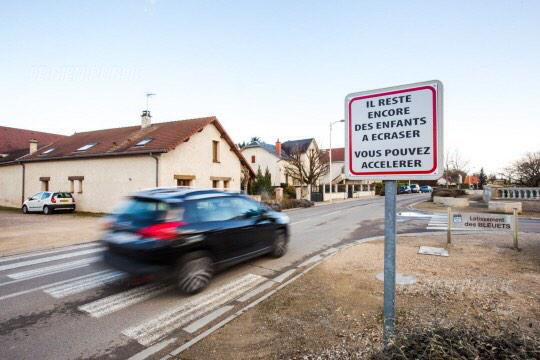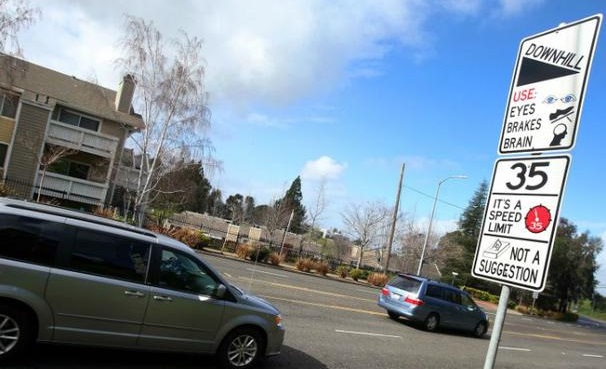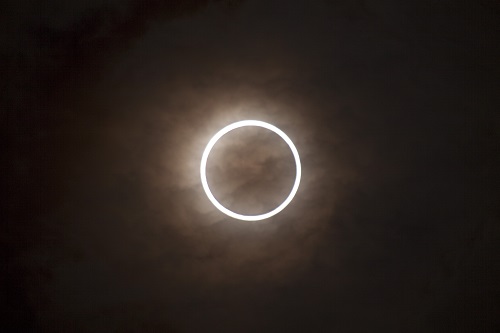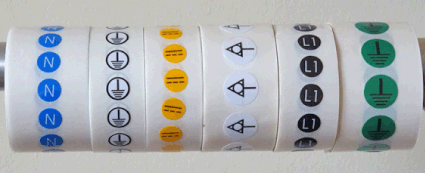
You've probably seen the standard fire door sign - a blue circle on a white background - thousands of times. But how often do you think about fire doors and the damage that they can prevent in the event of a blaze? More importantly, how many times have you ignored that little blue circle and left a set of fire doors open?
If you don't understand why fire doors are legally required to be kept shut, consider these two stories:
- In August 2012, Sophie Rosser returned to her flat in Canary Wharf to find that the building was on fire. She rushed inside to find her fiancé Oscar Silva; in the end, he managed to survive by escaping to a nearby balcony, but Rosser was not so lucky, dying in hospital after collapsing and getting badly burned by the fire. An inquest found that Rosser's death could have been prevented were it not for a fire door that had been left open in the building.
- More recently - earlier this month, in fact - a fire broke out in Summerlands, a care home in Portsmouth. The blaze began in the laundry room (it was seemingly caused by one of the tumble dryers), but a pair of properly-secured fire doors prevented it from spreading to the rest of the building. The home was evacuated upon discovery of the fire, and two residents were treated for smoke inhalation, but thanks to the fire doors, there were no fatalities.
These two starkly different reports really illustrate the importance of fire doors, and if we want to see fewer stories like Sophie Rosser's, it is crucial that we all start taking these safety measures more seriously. A large part of the problem is information-based; all too often, people either don't notice the fire door signs at all, or they ignore them because nobody has explained why the doors should be kept shut.
We think it's time for a change. We can all take responsibility for keeping fire doors shut, and now that you've read about Summerlands and Sophie Rosser, you can explain the importance of fire doors to other people: they keep fire and smoke contained, preventing blazes from spreading and causing even more damage. Ensure that all of your fire doors are fitted with the proper fire door signs (or, if this is not your responsibility, talk to the person in charge) and if you ever see anybody propping open a fire door, tell them exactly why this is such a bad idea!
Last month, we shared the amusing story of Hayward, a town in California that has installed a series of humorous traffic signs ("It's a speed limit, not a suggestion!") in an effort to improve road safety. Well, a village in Eastern France has gone one step further - motorists passing through Bretenières (approximate population: 40) are now being greeted by this slightly morbid notice:

Translation: "There are still children to run over. You can accelerate."
Unsurprisingly, this spectacularly sarcastic approach to road safety has caused its share of controversy. Many angry letters have been written, and this tiny village's outrageous road signs have made the news all over France. So what does Hervé Bruyère, Mayor of Bretenières, have to say in defence of his sardonic signage? Here's an excerpt from The Connexion's report about this story:
Bruyère, who was elected mayor in last year's local elections, said that the signs were a last resort after every other attempt to slow down speeding motorists on a perfectly straight section of road through the centre of the village had failed..."Motorists sometimes drive at between 70kph and 80kph. The village is quiet, but I have seen several near misses," he added.
In short, these signs are an attempt to tackle that same problem with which the city of Hayward was struggling: the standard road signs that we see every day have become 'white noise', and since people no longer take any notice of signs like these...

...local authorities are forced to resort to signs like these...

...to catch the public's eye. As gruesome as that French sign is, we can definitely understand the thinking behind it - you're more likely to pay attention to something funny that you've never seen before than a boring old safety symbol that you've seen thousands of times before!
That being said, standard road signs are still important. We made this point in the Hayward blog post, too, but it bears repeating: funny road signs are a fantastic idea, but they should be used in addition to the normal traffic signs, not instead of them. If you work for your local council and Mayor Bruyère has inspired you to try the sarcastic approach in your town, remember that humour alone is not enough!
Asset tags have many different uses in many different settings. Here at Label Source, we aim to provide the perfect asset marking solution for each and every customer, and so our asset tags and labels come in a wide variety of different materials and designs.
But which asset tag is right for you? With so many options to choose from, it's easy to feel a little uncertain when you're trying to implement an asset tagging system. There are lots of decisions to make; for example, would you like your labels to be made of vinyl, foil, or polyester? Do you need your tags to be tamper-evident for security purposes? And what colour would you like the labels to be?
To help you through this potentially mind-boggling process, we at Label Source have put together a handy guide to the different types of asset tag we offer. If you need further assistance, please don't hesitate to give us a call on 0800 3761 693 (UK enquiries) or 0044 1443 842769 (international customers).
PVC Asset Labels
PVC is a type of self-adhesive vinyl with great durability. These labels are waterproof, chemical-resistant, and able to withstand temperatures between -30 and +90 degrees Celsius. They come with a permanent adhesive that will work perfectly on most smooth, flat surfaces, and they are abrasion- and rub-resistant, so they should last for a very long time.
Polyester Asset Tags
These labels are similar to the PVC labels described above, but their operating temperature range is somewhat larger; our polyester tags can withstand any temperature between -40 and +120 degrees Celsius.
Foil Asset Labels
Our foil labels have all of the properties listed above. Additionally, they are oil-resistant and have an even larger temperature range (-40 to +150 degrees Celsius) than our polyester labels.
Destructible Asset Labels
Want to make sure that your labels aren't removed? These destructible labels will fragment (tear) upon attempted removal, which means that they cannot be removed cleanly.
Tamper-Evident Labels
Another high-security option; these labels can't be removed intact, and they will leave behind a printed pattern if peeled away.
These are just some of the asset tagging options available from Label Source. We also sell cable wrap labels, jumbo-sized tags, dual labels, and more.
Another day, another silly "elf and safety" story. With a solar eclipse due to darken much of Europe for a few minutes tomorrow morning, school chiefs are reportedly planning to keep pupils indoors during the event so as to protect the children's eyes.

One ring to rule them all...
As usual, the newspapers have painted this as a case of 'health and safety gone mad', but in fairness to the school workers in question, solar eclipses can be very harmful. The sun's rays can damage human eyesight even during an eclipse, and it's important to note that only the northernmost parts of Europe will experience a full eclipse tomorrow - the rest of us will still be able to see part of the sun. In some ways, looking at the eclipsed sun is actually more hazardous than looking straight at the sun on a normal day, because your body's natural reactions (squinting, looking away) won't kick in due to the darkness.
Still, this doesn't necessarily mean that Britain's schoolchildren should be robbed of this opportunity (which, after all, doesn't come along every year). Instead, here are a few quick safety tips for tomorrow's eclipse - remember, health and safety is here to keep you safe, not to ruin your fun!
- Know the dangers. Staring at the sun (even during a total eclipse) can cause irreversible damage to human eyes, scorching the retinas and potentially triggering a variety of ocular disorders and even blindness. If you are taking children outside to enjoy the eclipse, make it clear to them that looking straight at the sun is dangerous, and be sure to explain what may happen if they try it.
- Don't look at the sun (even with sunglasses on!) No commercially-available pair of sunglasses will be sufficient to protect your eyes from direct contact with the sun's rays, so don't even try it. Of course, you can buy special eclipse glasses that are specifically designed for eclipse viewings, but be sure to buy with caution - there's no way to guarantee that every pair of so-called 'eclipse glasses' will actually protect your eyes.
- Make a pinhole camera. This is a time-honoured way to view solar eclipses safely, and it can double as a fun craft project for children. Simply take a piece of cardboard and poke a pin-sized hole in the centre; then, during the eclipse, hold your card up to the sun (remember not to look!) and hold another piece of cardboard underneath. A vision of the eclipse will be projected onto the second piece of card, allowing you to watch as it happens.
- Steer clear of selfies! This is one "elf and safety" warning that's totally justified - many experts are concerned that people will try to take 'selfies' during the eclipse and, in doing so, inadvertently glance up at the sun. We recommend that you stay safe and hold your selfies until afterwards!
Click here for more health and safety blogs from Label Source.
Label Source supply a range of electrical and electronic equipment labels to identify electrical safety features such as electrical earth or ground. These are to assure users of the equipment that they are safe from injury from the electrical shock. In addition, these markers can provide evidence of the performance integrity of appliances, lightning protection and prevention of static electrical charge.
Amongst the range of electrical safety symbols are electrical earth, safety earth, ground, protective conductor, neutral conductor, potential equalisation, direct current (DC), alternating current (AC), positive and negative.

In addition, we have several other label ranges for electrical equipment marking.
If you have any made to order requirements involving electrical equipment markers, please contact us by e-mail (sales@labelsource.co.uk ) or by telephone 0800 3761693 (UK), or +44 1443 842769 (outside UK).